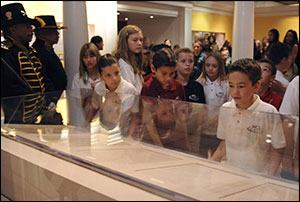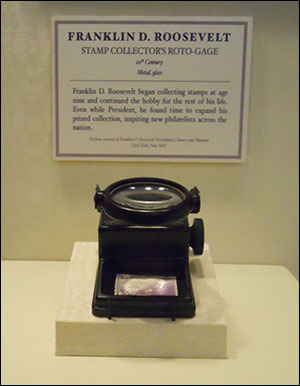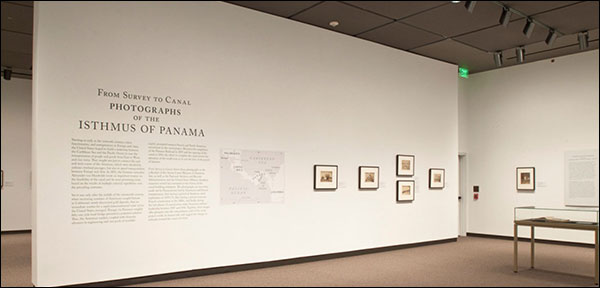
Borrowing NARA Holdings for Exhibition
The National Archives and Records Administration's loan program expands access to its archival and museum holdings and helps educate the public about the American national experience.
The National Archives and its presidential library museums nationwide have made available a wide range of items to other museums, from the letters of George Washington, Frederick Douglass and Susan B. Anthony to Franklin Roosevelt's leg braces and Dwight Eisenhower’s Army jacket. We have loaned the Louisiana Purchase Treaty, Abraham Lincoln telegrams, Adolph Hitler’s will, John F. Kennedy’s Inaugural Address, the Civil Rights Act of 1964, foreign and domestic gifts to the presidents, and much more. Stories of less well known Americans have been told using pension records, immigration and military service records, court records all the way up the Supreme Court, petitions to Congress, patents, maps, and photographs.
NARA Loan Policy
Who may obtain loans of NARA holdings for exhibition? Museums and cultural institutions, that have established exhibition programs, comply with National Archives security and environmental requirements, and have professional staff proficient in handling the requested material may borrow items.
What criteria are used to approve and deny loan requests? Each request for loan will be judged on its particular merits—. We consider the institution’s reputation, its facility’s compliance with National Archives requirements, and the exhibition for which the loan is proposed in relation to the availability, importance, stability, uniqueness, and value of the material being requested. Otherwise, loan requests are considered on first-come, first-served basis.
What is the maximum exhibit period? Original documents, artifacts, and other historical materials may be exhibited for up to one year. The National Archives may specify shorter periods.
What is the minimum exhibit period? Exhibitions are usually 30 days or more to warrant the costs and risks associated with loans, travel and exhibition. Shorter periods may be allowed for preservation purposes.
What types of loan requests are not approved? The National Archives does not lend materials for exhibitions staged primarily for fundraising or partisan purposes, or to market commercial products.
What types of holdings might not be approved for loan? We may decline to lend certain items because of their condition, exhibition history, agency business needs, conflict with the National Archives' mission or professional ethics or the failure of the facility to comply with our requirements.
Do any special requirements apply to House or Senate records? The records of the U.S. House of Representatives and the Senate are owned by those respective bodies. The National Archives must obtain permission of the Clerk of the House and the Secretary of the Senate, respectively, before authorizing loans of their records.
What costs are typically associated with a loan of NARA’s holdings? The borrowing institution is responsible for the costs of reproductions, preparation of items for exhibition, NARA staff travel, packing and shipping, and insurance.
How to Request a Loan
Before submitting a formal request, borrowers should discuss costs and other likely requirements with your National Archives contact. Sometimes another item from the holdings or a facsimile may be more appropriate.
The formal written request should be submitted at least 180 days prior to the loan and include the following:
- Title and purpose of the exhibition, brief description of content, the dates of exhibition, and profit/non-profit status of organizing institution
- If more than one venue, include location and opening and closing dates at each
- American Alliance of Museums General Facilities Report, if not already on file, for each venue
- Description of each item(s) being requested, including citation:
- page openings for any volumes;
- for multi–page manuscripts, description of which pages/sides of page to be displayed;
- plans for exhibiting individual items, e.g. wall-hung frames, display case, etc., including floorplans and photographs of exhibit spaces. - Contact information for exhibition curator and registrar, including phone and email
- Proposed plans for shipping and insurance
Send the above information to your National Archives contact.


